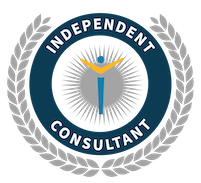Whether your company’s CRM system was implemented a decade ago or launched last month, there are likely “pockets of resistance” to adopting the CRM system.

Some people within your organization may refuse to use the system altogether. So far, the cost of the system has outweighed its benefits.
Here are the main reasons employees resist using a CRM system.
1. Your System is Built on Legacy Technology
If your CRM is in the “implemented a decade ago” category, there may be technical barriers to usage, such as the need to first connect to your corporate network and then use terminal services to access the database.
If it’s onerous for users to get access to the system simply, adoption will suffer.
2. Your CRM System is Filled with Bad Data
When your users need to wade through mountains of duplicate records and are confronted with too many fields and pick lists with dozens of choices, they become discouraged from using the CRM application.
Many “long gone” contacts in the database add to the clutter.
3. Your CRM System Was Over-Designed
CRM database design tools are more powerful than ever. While developing a normalized database structure is good practice, there can be risks to over-designing a CRM database and forcing users to drill down to many levels to enter and access data.
Too many levels of database hierarchy can also make report generation a challenge.
4. Your CRM System Was Under-Designed
Sometimes, CRM administrators new to managing a database application will under-leverage the relational capabilities of a CRM database and will design an overly flat database structure.
A classic example is the addition of secondary contact fields to the account level, which makes for easier data entry, but which cripples future one-to-one communications with those contacts.
5. Your CRM System Doesn’t Match Your Business Processes
There are ample stories of organizations for which certain business processes are driven by how the CRM system works — not the other way around.
It’s critical to develop your requirements first — even in advance of buying a CRM system.
6. Your CRM System is Platform Dependent
If your CRM system doesn’t work on users’ preferred browsers and devices, it may severely limit users’ ability to access the system.
To what degree does your CRM run on assorted versions of Internet Explorer, Firefox, Chrome, Safari, Windows, OS X, MacOS, Android, etc.?
7. There’s Nothing for Users to Get Excited About
Many people log into their favorite social media platforms every morning because they look forward to seeing what’s new and exciting on their timelines.
If a salesperson knows that new, quality leads will be waiting for them every time they log into the CRM system, they will have something to look forward to.
Are marketing-qualified leads flowing directly into your CRM system?
8. Users Don’t See Added Value
Sales users, in particular, need to believe that using a CRM system will add to their paycheck. If a CRM system doesn’t help increase sales, why bother using it? What functionality does your sales team need to shorten sales cycles and improve closing ratios?
If customer service users can’t manage customer email communications within the CRM system, that will be a disincentive for those users to adopt the CRM system.
9. A Lack of Executive Level Involvement
Often, busy executives don’t take the time to understand the issues with the company’s CRM system causing a lack of usage.
Therefore, the CEO, COO, and other management team members may not financially support updates to the system or a replacement of the system, which would lead to higher adoption of CRM.
10. New Users Aren’t Getting Trained
New users of your CRM system are given a username and password — but no training.
An ongoing training program is essential for maximizing new user adoption. “We never got trained” is a common complaint among CRM users.
11. Your CRM System Isn’t Collaborative
Collaboration within a CRM system is a big component of internal company communications for many organizations. Collaborative features like Salesforce Chatter and HubSpot’s collaboration sidebar can drive user adoption.
Steps can be taken to improve adoption only by identifying the reasons for under-adoption.
It’s important to interview users so they can articulate their reasons for underutilizing or rejecting the current system.




